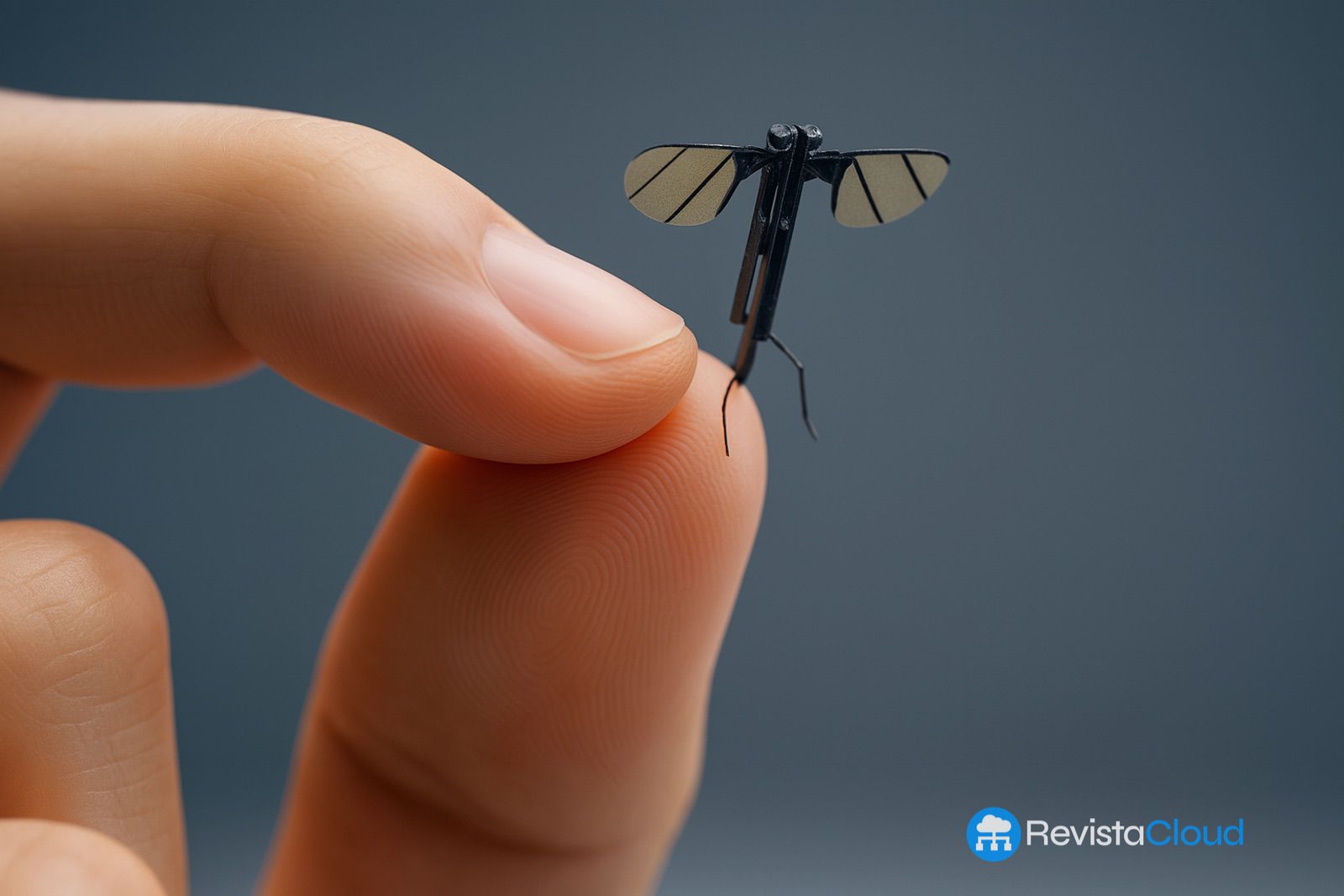The robotics lab at the National University of Defense Technology unveils a nearly invisible bionic drone designed for special operations
A military lab in China has introduced a technological advancement that seems straight out of a futuristic espionage novel: a micro-drone shaped and sized like a mosquito, designed for undercover operations and reconnaissance missions on the battlefield. The device has been developed by the robotics lab at the National University of Defense Technology (NUDT) in Hunan province.
The micro-drone was showcased for the first time in a report by CCTV 7, the military channel of Chinese state television, where researchers presented various types of robots, from humanoids to these tiny aerial devices that are nearly imperceptible to the naked eye. During the broadcast, student Liang Hexiang held the drone between his fingers and explained, “This mosquito-type robot is specially designed for information reconnaissance tasks and special missions on the battlefield.”
Technology for Stealth
The prototype displayed features an elongated central body, leaf-shaped wings, and ultra-thin legs that mimic the limbs of a real insect. Several versions are in development: one with two wings and another with four, the latter operable from mobile devices such as smartphones. Although the exact hardware it includes has not yet been revealed, it is estimated that the system possesses miniaturized sensors to capture visual or auditory information in sensitive environments.
The bionic nature of the micro-drone suggests a clear inspiration from the flight and behavior of mosquitoes, aimed at enhancing its camouflage and enabling silent operation without detection.
Potential Military and Civil Applications
While there are currently no indications that these devices are actively being used by the Chinese Armed Forces, their development aligns with a clear strategy: to create extremely small and effective surveillance tools for missions where discretion is key. This type of technology could be utilized in hostile urban environments, enemy bases, or rescue missions in dangerous areas without compromising human lives.
In addition to military applications, micro-drones like this could have uses in civil protection, recovery of individuals in collapsed environments, or inspection of structures that are difficult to access.
The Energy Challenge
One of the main challenges of this technology is energy supply. A device this small must have a power source light enough not to affect flight, yet powerful enough to perform its task and return or transmit the collected information. So far, it has not been confirmed what type of battery or charging system this prototype uses.
China and the Race for Low-Altitude Airspace Dominance
The development of the micro-drone is part of a broader context: the rise of the so-called low-altitude economy in China, which encompasses everything from air taxis to advanced unmanned transportation systems. Drone technology is one of the priority areas within the country’s military and civil innovation strategy.
With these kinds of innovations, China is reinforcing its commitment to lead the next generation of autonomous systems, for both industrial and defense uses. Although it is currently a research-phase project, the long-term implications could be significant in terms of electronic warfare, espionage, and advanced surveillance.
Image based on CCTV enhanced with AI. via: scmp

